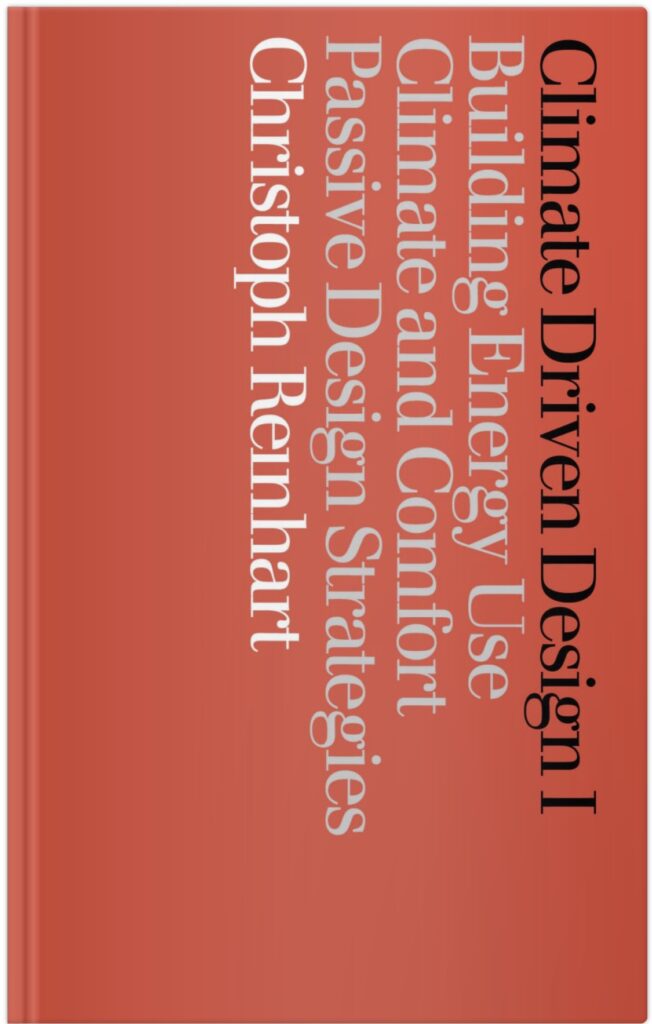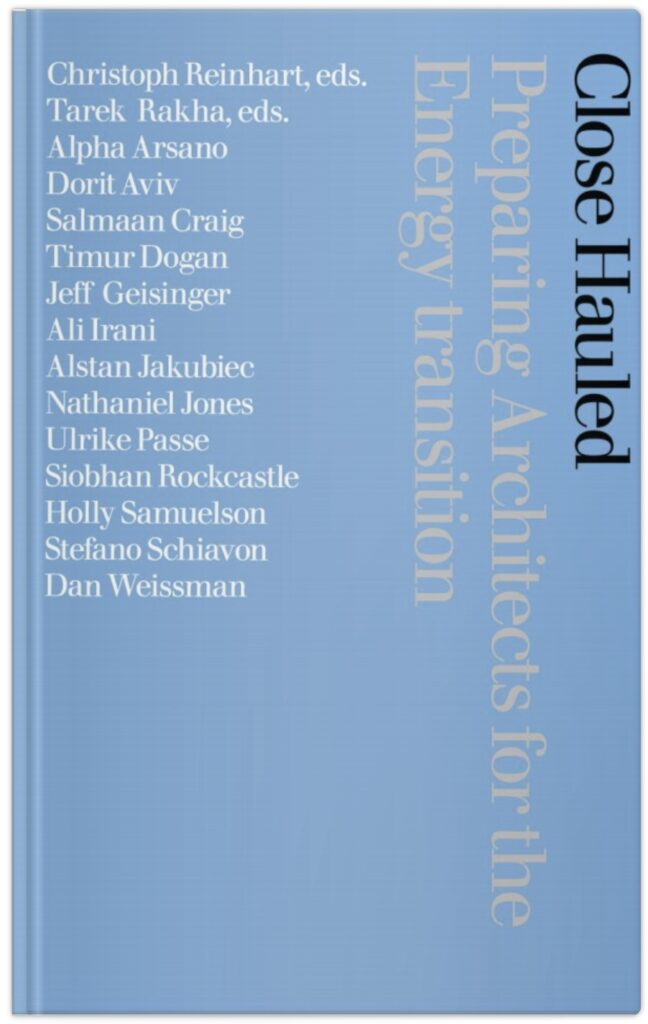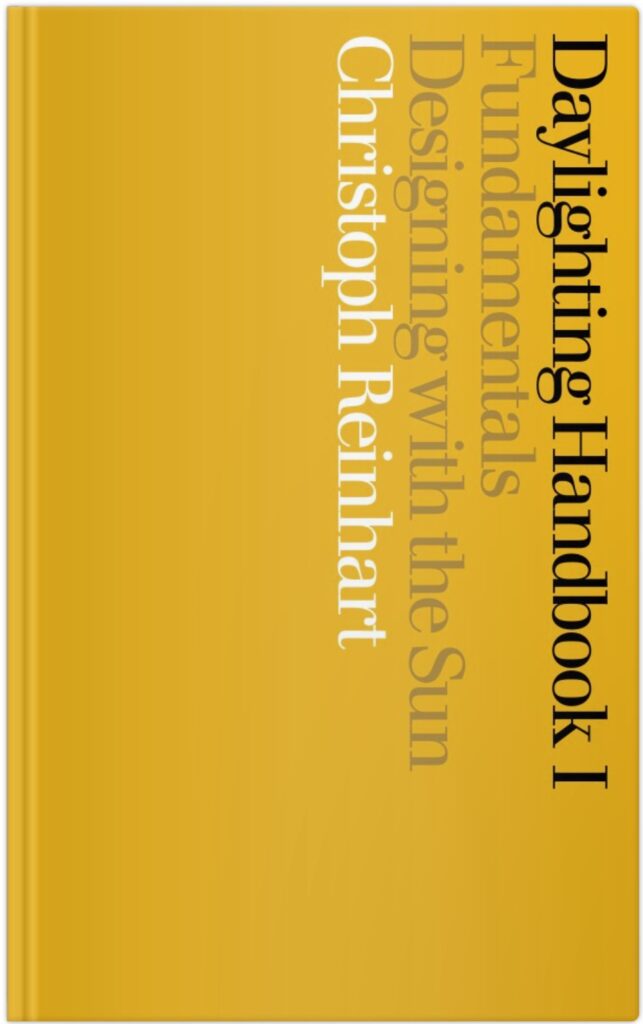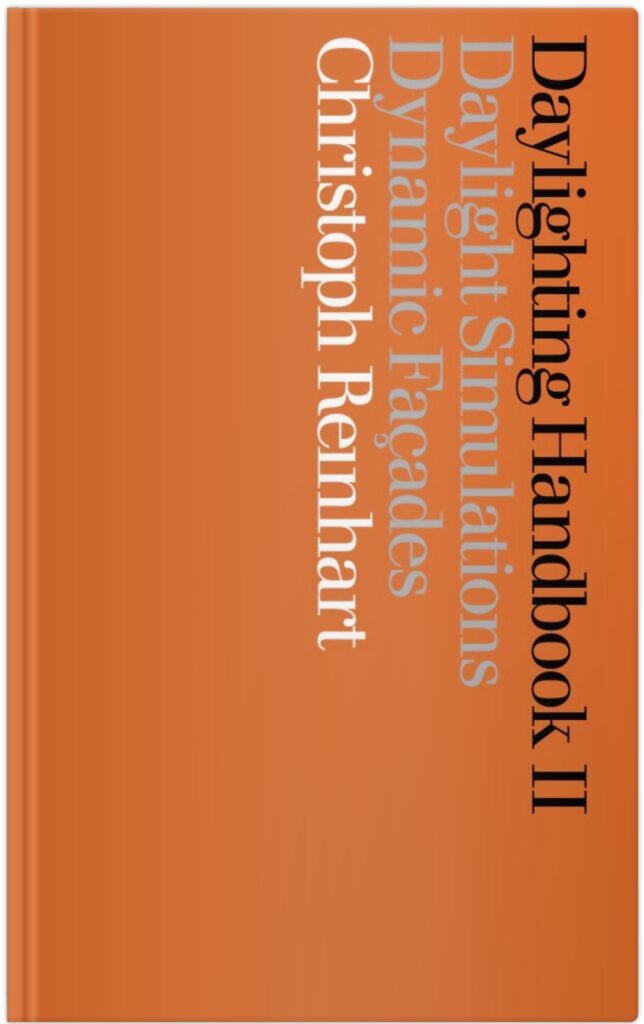Welcome to Building Technology Press. Our books available in digital and/or print format. To start reading, log in or sign up for a free account. To purchase a paper copy, click on the Buy on Amazon pulldown and select your market place. For full online access to all of our books, you may purchase a BT World subscription for US$48.00/yr.
Enjoy!

Climate Driven Design I
Christoph Reinhart, Fall 2024
This book offers a systematic study of the atmospheric conditions around and thermal conditions within buildings. The goal is to empower the reader to design thermally comfortable and resource-efficient indoor environments. Part 1, Energy Use in Buildings, explains how to measure and evaluate environmental performance in terms of energy, carbon emissions and costs. Part 2, Climate and Comfort, shows how to analyze a site’s microclimate and discusses our evolving understanding of thermal comfort. Passive Design Strategies introduces physical phenomena that determine the relationship between indoors and outdoors, namely internal gains, thermal mass and heat flow. Each process description is accompanied by a review of technologies and design interventions to manipulate these phenomena to benefit the occupants of a building.

Close Hauled
Christoph Reinhart and Tarek Rakha (editors), in preparation
This book is the result of a two day symposium during which, building science educators from across a spectrum of North American Schools of Architecture convened at MIT to exchange best practices for teaching architecture students how to pursue evidence-based architecture using environmental performance analysis methods. During the symposium, participants presented a series of in-classroom exercises and take-home assignments to each other, clarified the intended learning goals associated with each activity and how it may be implemented in architecture classes of different sizes. The result of these deliberations will be a collection of design and concept exercises that support the implementation of net zero energy building designs.

Daylighting Handbook I
Christoph Reinhart, 2014
This is volume I of the Daylighting Handbook series. The book is organized into two parts, Fundamentals and Designing with the Sun. Fundamentals serves as a general introduction to daylighting, its implementation and daily and seasonal availability. It also explains how light helps us to perceive the world around us and to maintain our circadian rhythm. A practical approach to building massing via rules of thumb is followed by methods to determine where the sun is located in the sky throughout the year. This information is then used to design static shading devices. The book closes with an introduction to heliodon studies using physical models.
Log in or Sign up to start reading

Daylighting Handbook II
Christoph Reinhart, 2018
This is volume II of the Daylighting Handbook series. The book is organized into two parts, Daylight Simulations and Dynamic Façades. Part 1 discusses how to predict the overall amount of daylight in and around buildings at any given site using manual methods and computer simulations. Part 2 presents an integrated design analysis framework to evaluate façades with dynamic shading and lighting systems that negotiate between occupant comfort and energy efficiency. The book closes with a hypothetical design study of a sidelit office as well as a discussion of how the framework can be combined with other performative design aspects such as structures.
